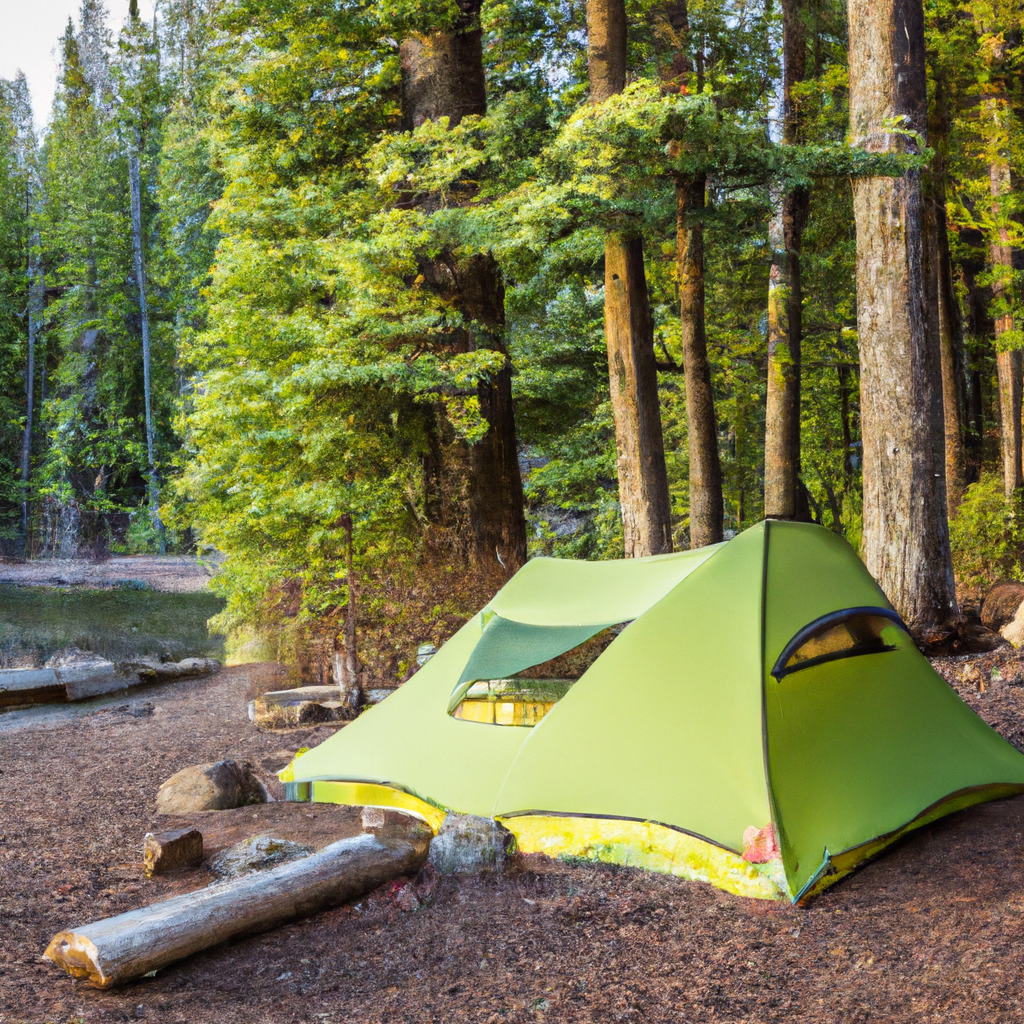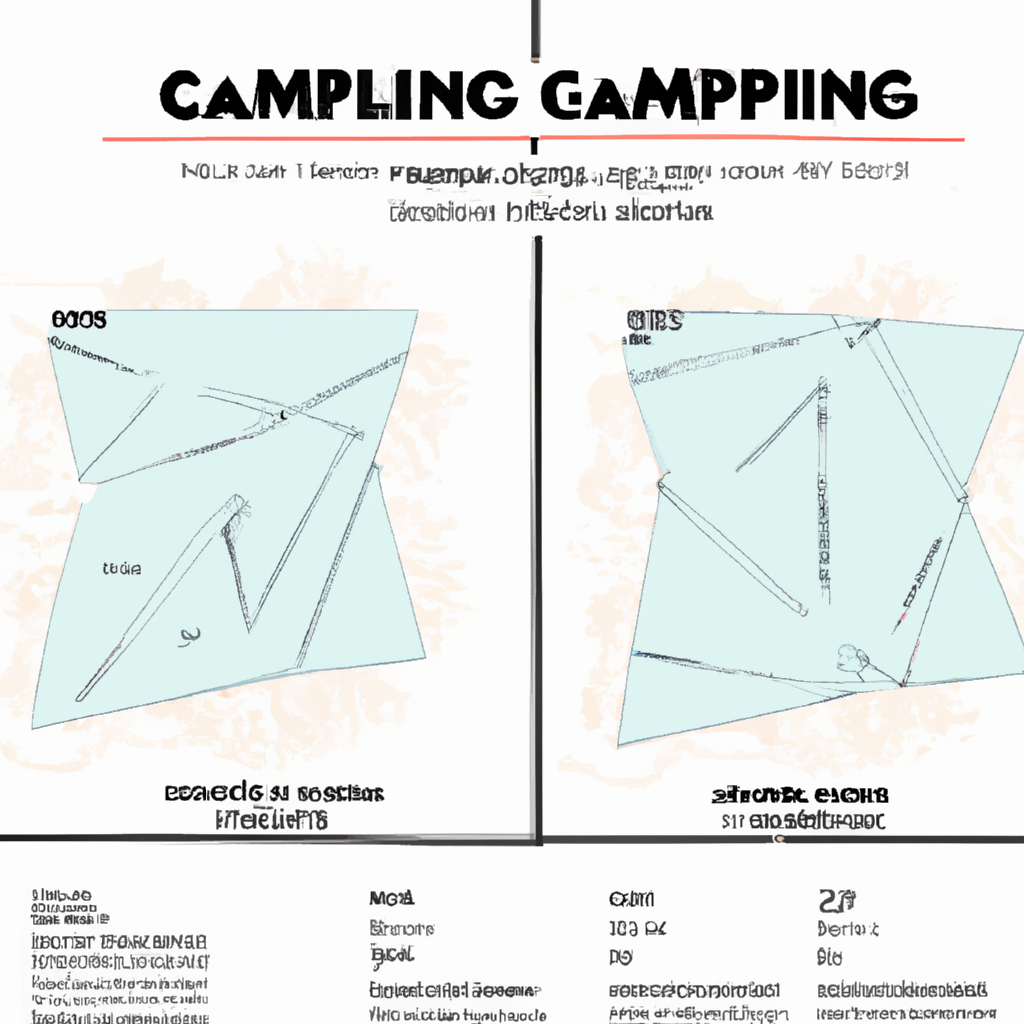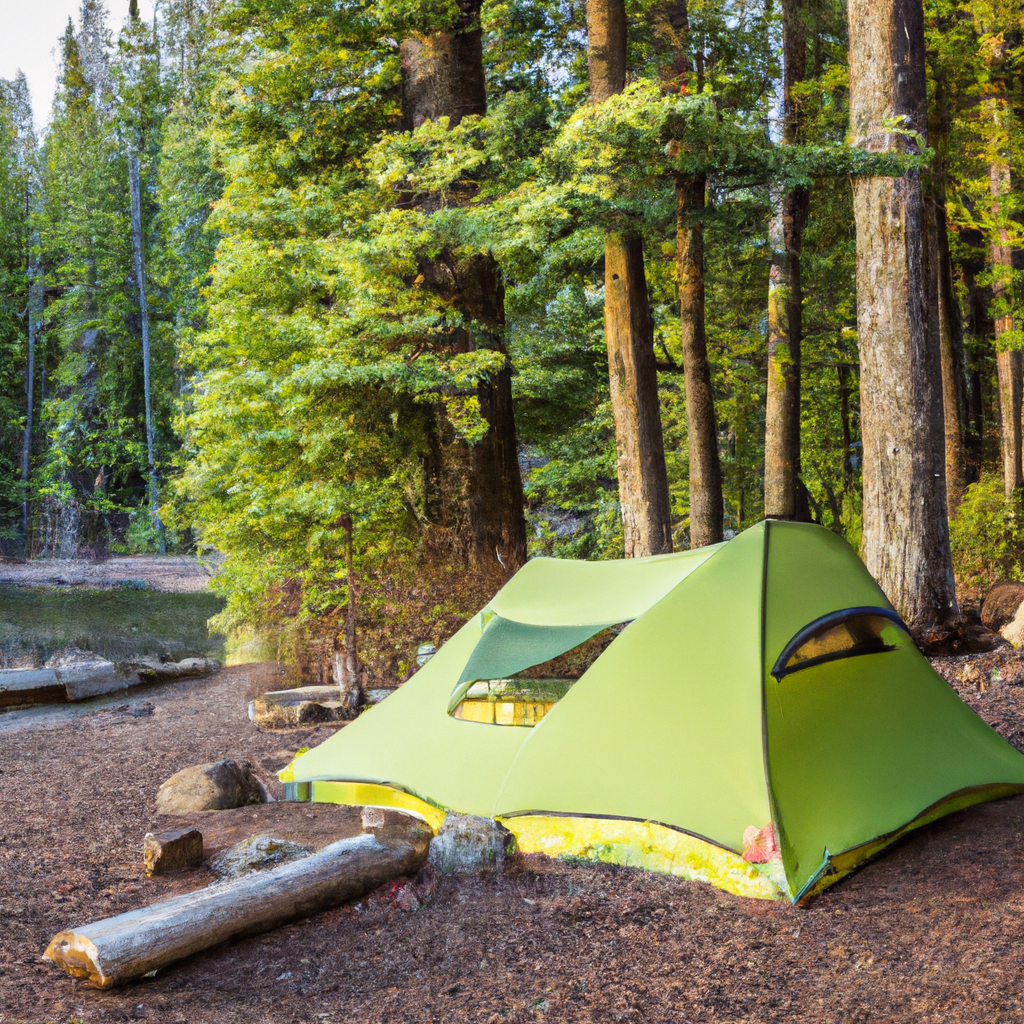Planning a camping trip in a designated wilderness area? It’s important to understand the rules and regulations that come with immersing yourself in the beauty of nature. Whether you’re an experienced camper or a newbie to the great outdoors, knowing what’s allowed and what’s not will ensure a respectful and enjoyable experience for you and others. From picking the perfect campsite to disposing of waste, this article will guide you through the essential rules for camping in designated wilderness areas.

Camping Regulations
When planning a camping trip in designated wilderness areas, it’s important to be aware of and adhere to the camping regulations in place. These regulations are implemented to protect the natural environment, ensure visitor safety, and maintain the overall enjoyment of the camping experience for everyone. By following these rules, you can help preserve the beauty and serenity of these pristine areas for future generations to enjoy.
Permits and Reservations
Before embarking on your camping adventure, it’s crucial to check if a permit is required for your chosen wilderness area. Permit requirements vary depending on the location and time of year, so it’s best to do your research well in advance. Permits are usually necessary to manage visitor numbers and protect fragile ecosystems. Some wilderness areas also have designated camping zones, and having a permit ensures that you have a reservation for a specific campsite.
Reservation procedures for wilderness camping vary from one area to another. Some wilderness areas operate on a first-come, first-served basis, while others require advance bookings. It’s important to be familiar with the reservation procedures of the specific wilderness area you plan to visit. Reservations can often be made online or by phone, and it’s advisable to book well in advance to secure your desired camping dates.
Fees and Costs
Certain wilderness areas may charge a fee for camping permits and reservations. These fees typically contribute to the maintenance and conservation efforts of the area. The costs can vary depending on the duration of your stay, the number of people in your group, and any additional services or amenities provided. It’s essential to check the fee structure and ensure you are aware of any costs associated with your camping experience.
Campsite Selection
Choosing a suitable campsite is an important aspect of responsible wilderness camping. To minimize the impact on the environment and maintain the natural beauty of the area, campers must adhere to campsite selection guidelines.
Restricted and Designated Areas
Wilderness areas often have restricted and designated camping zones. These areas are established to protect sensitive habitats and preserve the wilderness experience. When selecting a campsite, it’s important to respect these boundaries and set up camp only in designated areas. This helps to minimize the disturbance to wildlife and ecosystems and ensures that campsites are dispersed throughout the area.
Distance from Trails and Water Sources
When selecting a campsite, it’s crucial to choose a location that is at an appropriate distance from trails and water sources. This helps to prevent erosion, protect water quality, and preserve the natural habitat. Campers should camp at least 200 feet away from water sources like lakes, rivers, and streams to avoid polluting them and to allow wildlife to freely access these essential resources.
Minimum Impact Zones
In designated wilderness areas, there are often minimum impact zones that require special consideration. These zones are typically fragile and require extra care to minimize human impact. It’s important to be familiar with any minimum impact zones in the area you plan to camp and to follow the guidelines provided. By observing these zones, you can help protect delicate flora and fauna, while also ensuring a sustainable camping experience for all.
Stay Duration
To ensure fair access to wilderness areas and prevent overuse, regulations are often in place regarding the duration of camping stays.
Maximum Stay Limits
Most wilderness areas impose maximum stay limits to allow as many visitors as possible to enjoy the area. These limits ensure that campsites are available for others and help prevent long-term camping that could negatively impact the ecosystem. The specific maximum stay limits can vary depending on the wilderness area and time of year, but it’s important to adhere to these limits to ensure a fair and enjoyable experience for all campers.
Rules for Extended Stays
If you wish to extend your camping stay beyond the maximum limit, special rules and procedures may apply. In some cases, you may be required to obtain special permits or consult with park officials. It’s important to be aware of these rules and regulations if you plan to stay longer than the specified period. By following the guidelines, you can help maintain the integrity of the wilderness area while enjoying an extended camping experience.

Group Size Restrictions
Wilderness areas often impose group size restrictions to manage visitor numbers and minimize human impact on the environment.
Maximum Group Size
To maintain the tranquility and natural experience of the wilderness, maximum group size restrictions are often in place. These restrictions vary depending on the specific wilderness area but are typically designed to limit the impact on the environment and wildlife while ensuring the safety and enjoyment of all visitors. It’s important to be aware of the maximum group size allowed in the area you plan to camp and to comply with these regulations.
Rules for Larger Groups
If you are planning to camp with a larger group that exceeds the maximum size limit, it’s important to take additional precautions and responsibilities. Larger groups can have a greater impact on the environment, so it’s crucial to practice responsible camping and ensure that all members of the group are aware of and follow the regulations. It may be necessary to obtain special permits or make additional arrangements to accommodate larger groups.
Campfire Rules
Campfires are an enjoyable part of the camping experience, but it’s important to be mindful of campfire rules to prevent accidents and protect the environment.
Permitted Campfire Locations
In designated wilderness areas, campfires may only be permitted in designated locations. These locations are typically established to minimize the risk of wildfires and protect the surrounding vegetation. It’s important to familiarize yourself with the rules and regulations regarding campfires in the specific wilderness area you plan to visit. Always use the designated fire rings or fire pits, and avoid building fires in undesignated areas.
Firewood Collection
In many wilderness areas, collecting firewood is prohibited to preserve the natural ecosystem. It’s important to respect these rules and rely on alternative methods for cooking and warmth. Bringing your own firewood or using pre-packaged fire logs is usually the best way to ensure compliance with firewood collection regulations.
Fire Safety Guidelines
When enjoying a campfire, it’s crucial to follow fire safety guidelines to prevent accidents and protect the environment. Always keep a source of water nearby to extinguish the fire completely before leaving. Never leave a fire unattended and ensure that it is completely out before going to sleep or leaving the campsite. By practicing fire safety, you can enjoy the ambiance of a campfire while minimizing the risk of wildfires.
Waste Disposal
Proper waste disposal is essential for maintaining the cleanliness and integrity of wilderness areas.
Pack It In, Pack It Out
One of the fundamental principles of responsible camping is packing out all waste. This means bringing all garbage, including food wrappers, cans, and bottles, with you when you leave the campsite. Leaving trash behind not only detracts from the natural beauty of the area but can harm wildlife and disrupt the ecosystem. It’s important to properly secure garbage and dispose of it in designated trash containers outside of the wilderness area.
Human Waste Management
In designated wilderness areas, there may not be traditional restroom facilities. As a result, proper human waste management is crucial. It is generally required to bury human waste in a shallow hole at least 6-8 inches deep and at least 200 feet away from water sources. Some wilderness areas may require the use of portable toilets or sanitation bags for waste disposal. Understanding the specific regulations for human waste management is essential to protect the environment and prevent contamination of water sources.
Garbage Disposal
In addition to packing out garbage, it’s important to be mindful of other waste materials and dispose of them properly. This includes items such as packaging materials, leftover food, and personal hygiene products. These should be packed out and disposed of in designated trash containers, as leaving them behind can attract wildlife and cause harm to the ecosystem. By properly disposing of garbage and waste, you can help maintain the cleanliness and natural beauty of the wilderness area.
Campsite Restoration
Leaving no trace and restoring campsites to their natural state is a vital part of responsible wilderness camping.
Leave No Trace
The principle of “Leave No Trace” is a guiding principle for all outdoor enthusiasts. When camping in designated wilderness areas, it’s important to leave the campsite as you found it or even better. This means packing out all garbage, ensuring that the fire pit is properly extinguished, and leaving no visible impact on the environment. By following the principles of Leave No Trace, you can help preserve the natural beauty of the wilderness area for others to enjoy.
Naturalizing Campsites
To restore campsites to their natural state, it’s important to remove all traces of human presence. This includes picking up trash, carefully removing any signs of fire pits, and restoring the ground to its previous condition. By naturalizing campsites, we can ensure that the wilderness area remains unspoiled and allow nature to reclaim its rightful place.
Restoring Vegetation
Camping can sometimes result in damage to vegetation, particularly when tents are set up on delicate plant life. It’s important to avoid camping directly on vegetation and instead choose durable surfaces for setting up camp. If any damage does occur, efforts should be made to restore the vegetation by carefully removing any items that may have impacted it and allowing nature to regenerate. By restoring vegetation, we help protect the fragile ecosystem and maintain the overall health of the wilderness area.
Noise and Behavior
Respect for others and the natural environment is paramount when camping in designated wilderness areas.
Quiet Hours
Many wilderness areas have designated quiet hours to ensure that visitors can enjoy peaceful solitude and appreciate the sounds of nature. It’s important to be aware of these quiet hours and reduce noise levels during these times. By doing so, we can respect the experience of others and maintain the tranquility of the wilderness area.
Respect for Others
When camping in the wilderness, it’s important to respect the experience of other campers. This includes keeping noise levels to a minimum, being considerate of others’ space, and avoiding activities that may disturb the peace and serenity of the area. By being mindful of others, we can ensure that everyone has an enjoyable camping experience.
Music and Amplification
Playing loud music, using amplification devices, or engaging in activities that generate excessive noise can disrupt the natural experience of the wilderness area. It’s important to be aware of and adhere to any regulations regarding music and amplification. When enjoying music, it’s advisable to use personal headphones or speakers at a low volume to minimize the impact on others and the environment.
Alcohol and Drug Restrictions
In designated wilderness areas, alcohol and drug restrictions may be in place to maintain visitor safety and preserve the natural environment. It’s important to respect these regulations and refrain from consuming alcohol or using drugs that may impair judgment or behavior. By doing so, we can ensure the safety of ourselves and others while enjoying the wilderness responsibly.
Wildlife Encounters
Designated wilderness areas are home to a diverse range of wildlife, and encountering these animals is often a highlight of the camping experience. However, it’s crucial to remember that wildlife should be respected and observed from a safe distance.
Respect Wildlife
When encountering wildlife in the wilderness, it’s important to maintain a safe distance and avoid disturbing the animals. Feeding wildlife is strictly prohibited, as it can lead to unnatural behaviors and harm to the animals. By respecting wildlife and observing them from a distance, we can protect their natural habitat and ensure their well-being.
Leave No Trace Principles
The Leave No Trace principles provide a comprehensive guide for responsible outdoor recreation. These principles are especially important when camping in designated wilderness areas.
Plan Ahead and Prepare
Proper planning and preparation are key to a successful and responsible camping trip. This includes researching the specific regulations and guidelines for the wilderness area, being familiar with the local weather conditions, and packing the necessary gear and supplies. By planning ahead, you can ensure a safe and enjoyable camping experience.
Travel and Camp on Durable Surfaces
To minimize the impact on the environment, it’s important to camp on durable surfaces such as established campsites or areas of bare soil. Avoid camping directly on vegetation or fragile ground that may sustain damage. By camping on durable surfaces, we can reduce erosion and preserve the natural vegetation of the wilderness area.
Dispose of Waste Properly
Proper waste disposal is crucial for maintaining the cleanliness and integrity of the wilderness area. This includes packing out all garbage, properly burying human waste, and avoiding any contamination of water sources. By disposing of waste properly, we can prevent environmental damage and keep the wilderness pristine.
Leave What You Find
When exploring the wilderness, it’s important to leave natural objects and artifacts as you found them. This includes rocks, shells, plants, and other natural features. By leaving these items undisturbed, we can ensure that future campers can enjoy the wilderness in its natural state.
Minimize Campfire Impact
Campfires can have a significant impact on the environment if not managed properly. It’s important to follow the campfire rules outlined for the specific wilderness area, use designated fire rings or pits, and practice fire safety. By minimizing the impact of campfires, we can prevent wildfires and preserve the natural beauty of the area.
Respect Wildlife
Wildlife encounters are a highlight of camping in designated wilderness areas. It’s important to remember that wildlife should be respected and observed from a safe distance. Avoid feeding or approaching animals and never disrupt their natural behavior. By respecting wildlife, we can protect their habitat and ensure their well-being.
Be Considerate of Other Visitors
Consideration and respect for other campers are essential for a positive and harmonious wilderness camping experience. This includes keeping noise levels to a minimum, limiting the use of personal music devices, and following any regulations regarding noise and behavior. By being considerate of others, we can all enjoy the tranquility and beauty of the wilderness.
In conclusion, camping in designated wilderness areas requires adherence to specific regulations and guidelines to preserve the natural environment and ensure the safety and enjoyment of all visitors. From obtaining permits and making reservations to choosing a suitable campsite and practicing responsible waste disposal, each aspect plays a vital role in maintaining the integrity of these protected spaces. By following these camping regulations, you can have a rewarding and responsible wilderness camping experience while contributing to the preservation of these pristine areas for future generations to enjoy.

